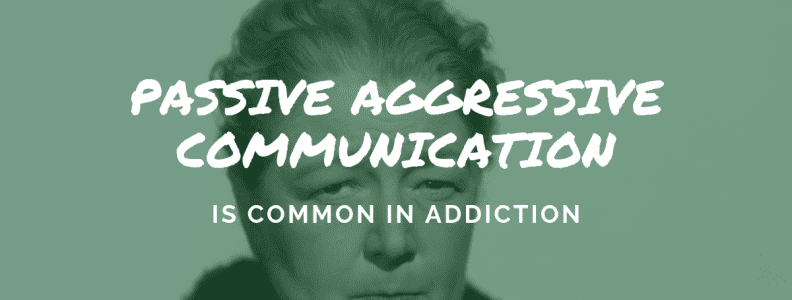How to Communicate to Heal, Not Hurt Passive Aggressive Communication is Common in Addiction
FINE. Whatever. These are phrases common in passive aggressive communication, which is the most covert and misleading form of negative communication. Communication in addiction is often passive aggressive; it is a way to control and deceptively manipulate. Whereas aggression is spontaneous, unplanned anger that aims to hurt someone, passive aggression is a more deliberate and covert way of expressing anger and exerting control over others. Passive aggression subtly “gets back at” someone. Whereas the aggressive person often acts on impulse and may soon regret the behavior, the passive aggressive person more likely derives genuine pleasure from frustrating others. Why do people communicate this way? On some level, a passive aggressive person believes life will only get worse if other people know of their anger, so they express their thoughts and feelings indirectly, through behaviors such as withdrawing from conversations (often with last words such as “fine” or “whatever”), sulking, procrastinating, carrying out tasks at sub-standard levels, sabotaging group efforts, and spreading rumors or discontent behind the scenes.
Examples of passive aggression
Non-Communication – when there is clearly something problematic to discuss Evading problems and issues, burying an angry head in the sand Procrastinating – intentionally putting off important tasks for less important ones Obstructing – stalling or preventing an event or process of change Ambiguity – being cryptic, unclear, not fully engaging in conversations Sulking – being silent, morose, sullen and resentful in order to get attention or sympathy Chronic Lateness – a way to get control over others and their expectations Making Excuses – always coming up with reasons for not doing things Victimization – unable to look at their own part in a situation and will turn the tables to become the victim and will behave like one Self-Pity – the poor me scenario Blaming others for situations rather than being able to take responsibility for their own actions or being able to take an objective view of the situation as a whole Fear of Intimacy – often there can be trust issues with passive aggressive people and guarding against becoming too intimately involved or attached will be a way for them to feel in control of the relationship
 Unresolved Conflict is at the Root
Unresolved Conflict is at the Root
You can probably recall lots of examples of passive aggressive communication, including your own. The root of the problem is that there is underlying conflict that hasn’t been dealt with. This is why this form of communication is so common for people in addiction – there is much that is not dealt with and substances have become the refuge, however unhealthy and unsustainable. If you find that YOU are communicating this way, can you step back and ask yourself what is at the core of your anger? If you are able to do that honestly with yourself, then you will need to use assertive communication skills to speak to the other in a way that is more honest yet not hurtful. You may find that counselling is a helpful way for you to get clear sight on your feelings, especially those that you have pushed way down.
Responding to Passive Aggressive Communication
Recognizing and dealing with passive aggressive communication in others demands much of you. You must be self-aware and honest with yourself and others. You must not react when you sense your buttons are being pushed; instead you must respond consciously with positive intent. Deep within the passive aggressive relationship there is tension and unexpressed anger. You must understand and accept this, and seek ways to have more honest communication where both parties are able to find a resolution to the embedded conflict. You cannot go into it with a “zero sum game” mentality where one wins and the other loses – both parties need to benefit. For further detail and some helpful tips for identifying and responding to passive aggressive communication and behavior, check out this article by Paul Chernyak, LPC. To do so effectively, however, you need to understand assertive commination.
Upcoming Blog on Assertive Communication
We’re excited for next week’s blog that focuses on Assertive Communication! At the end of it all, each of us wants deeply to be known and accepted and loved as we are, warts and all. We can give that to each other. One of the true privileges of helping a community of people in recovery is that we see this very thing happen with authenticity, every day. It is unbelievably powerful. Each of us is an individual, quite alone and lonely, until we come into relationship. We come into relationship by communicating – in what we do, how we act, what we say, how we listen, how we respond. There is hope for us yet! By June Sobocinski, M.A. Applied Communication

